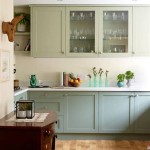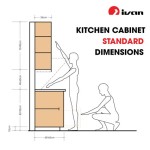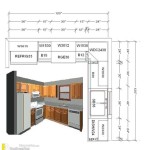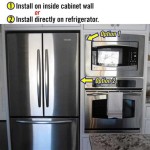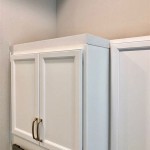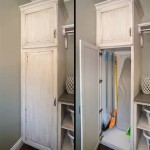Open Kitchen Shelf Designs: Functionality and Aesthetics
Open kitchen shelf designs represent a significant departure from traditional enclosed cabinetry, offering a visually accessible and often more personalized approach to kitchen storage. The shift towards open shelving has arisen from a desire for greater visual spaciousness, a more curated aesthetic, and easier access to frequently used items. The adoption of open shelves requires careful consideration of both the functional and aesthetic implications, including material selection, shelf placement, maintenance requirements, and overall kitchen design coherence.
The primary benefit of open shelving lies in its ability to create a sense of openness and airiness, particularly in smaller kitchens. By removing bulky upper cabinets, walls appear less confined, and natural light can permeate more freely. This design choice can significantly alter the perceived size of the kitchen, making it feel more welcoming and less cluttered. Furthermore, open shelves provide an opportunity to display aesthetically pleasing items, such as decorative dishware, cookware, or potted plants, transforming functional storage into a design feature.
However, the transition to open shelving is not without its challenges. Dust accumulation is a primary concern, necessitating more frequent cleaning. Items stored on open shelves are also more susceptible to grease and other airborne particles common in a kitchen environment. Consequently, meticulous organization and regular maintenance are crucial to maintaining both the appearance and hygiene of the open shelving arrangement. Furthermore, the open display of items can expose clutter and disorganization, potentially detracting from the overall aesthetic appeal of the kitchen.
Maximizing Functionality with Open Shelving Placement
Strategic placement of open shelves is paramount to maximizing their functionality and minimizing potential drawbacks. Considerations must be given to the frequency of item usage, proximity to relevant workspaces, and the overall flow of the kitchen. Shelves intended for everyday items, such as frequently used plates, glasses, or spices, should be placed within easy reach of the primary cooking and preparation areas. This proximity minimizes unnecessary movement and streamlines workflow during meal preparation.
Shelves placed above or near heat sources, such as stovetops or ovens, should be used with caution. The elevated temperatures and potential exposure to grease splatter can accelerate dust accumulation and necessitate more frequent cleaning. Sensitive items, such as spices or oils, may also degrade more rapidly when exposed to excessive heat. In such instances, alternative storage solutions, such as enclosed cabinets or drawers, may be more suitable.
Vertical spacing between shelves should also be carefully considered. Insufficient spacing can make it difficult to access items, while excessive spacing can create a cluttered or disorganized appearance. A general guideline is to allow sufficient clearance for the tallest item that will be stored on a particular shelf, while minimizing unused vertical space. Adjustable shelving systems offer the flexibility to customize shelf spacing as storage needs evolve over time.
The height of the highest shelf should be carefully assessed based on the user's reach. Shelves placed too high may be difficult to access without the use of a step stool, reducing convenience and potentially posing a safety hazard. Conversely, shelves placed too low may obstruct countertop space or create a visual barrier. Careful consideration of ergonomic factors is essential to ensuring the long-term usability and safety of the open shelving design.
Material Selection and Aesthetic Considerations
The choice of materials for open shelving plays a significant role in both the aesthetic appeal and the structural integrity of the design. Common materials include wood, metal, glass, and various composite materials, each offering distinct advantages and disadvantages. The selection should be based on the overall design style of the kitchen, the desired level of durability, and the anticipated load-bearing requirements.
Wood shelves offer a warm and natural aesthetic, blending seamlessly with a wide range of kitchen styles. Solid wood shelves are generally more durable and can support heavier loads than composite wood products. However, wood is also susceptible to moisture damage and may require periodic sealing or finishing to protect against water stains and warping. Different wood species offer varying levels of durability and aesthetic appeal, with hardwoods such as oak and maple generally being more resistant to wear and tear than softwoods such as pine.
Metal shelves provide a sleek and modern aesthetic, often associated with industrial or minimalist kitchen designs. Stainless steel shelves are highly durable, resistant to corrosion, and easy to clean, making them a popular choice for high-use kitchens. Metal shelves can also be powder-coated in a variety of colors to complement the overall design scheme. However, metal shelves may be less forgiving of scratches and dents than wood shelves, and may require more careful handling to maintain their appearance.
Glass shelves offer a lightweight and airy aesthetic, ideal for creating a sense of spaciousness and allowing light to pass through. Tempered glass shelves are more durable than standard glass and are less likely to shatter under impact. However, glass shelves can be prone to fingerprints and smudges, requiring more frequent cleaning to maintain their clarity. The load-bearing capacity of glass shelves is also generally lower than that of wood or metal shelves, limiting their suitability for storing heavy items.
The finish of the shelves should also be carefully considered to complement the overall kitchen design. Painted shelves offer a wide range of color options, allowing for seamless integration with existing cabinetry and wall colors. Stained wood shelves showcase the natural grain of the wood, adding warmth and character to the kitchen. Matte finishes tend to conceal scratches and fingerprints better than glossy finishes, making them a more practical choice for high-use areas.
Maintaining Cleanliness and Organization
Maintaining cleanliness and organization is crucial for the long-term success of an open shelving design. Regular dusting and cleaning are essential to prevent the accumulation of dust, grease, and other airborne particles. Wiping down shelves with a damp cloth and mild detergent on a weekly basis is generally sufficient to maintain their appearance. For heavily soiled areas, a stronger cleaning solution may be necessary, but care should be taken to avoid damaging the shelf material.
Organization is equally important. Items should be arranged in a visually pleasing and functional manner. Grouping similar items together, such as spices, oils, or serving dishes, can create a sense of order and make it easier to locate what is needed. Using storage containers, such as baskets or jars, can help to contain smaller items and prevent clutter. Regularly decluttering shelves and removing unused or unwanted items will also help to maintain a clean and organized appearance.
Consider rotating items on the shelves to prevent dust buildup and ensure that frequently used items are readily accessible. Regularly rearrange the display to keep the aesthetic fresh and engaging. This process offers an opportunity to assess the organization of the shelves and identify areas for improvement.
Choosing aesthetically pleasing and uniform containers or dishes can also contribute significantly to the overall visual appeal of the open shelving. When items are displayed prominently, the visual harmony of the collection becomes more important. Consider investing in a coordinated set of storage solutions or carefully curate the items displayed to create a cohesive and visually appealing arrangement.
Ultimately, the success of open kitchen shelf designs hinges on a balance of functionality, aesthetics, and maintenance. Careful planning, thoughtful material selection, and consistent effort are essential to creating a space that is both visually appealing and practically efficient.

20 Kitchen Open Shelf Ideas How To Use Shelving In Kitchens

22 Beautiful Open Shelving Ideas To Transform Your Kitchen

Stylish And Functional Kitchen Shelves

Kitchen Shelves And Racks Design Ideas Designcafe

Tips For Open Shelving In The Kitchen

Kitchen Shelf Styling Ideas For Fall Modern Glam

Kitchen Shelves And Racks Design Ideas Designcafe

Open Shelves For Kitchen 10 Ideas Your Walls Beautiful Homes

How To Decorate Kitchen Shelves Beautifully Open Doors Hearts

Kitchen Shelf Styling Tips And Budget Finds Jenna Sue Design
Related Posts

